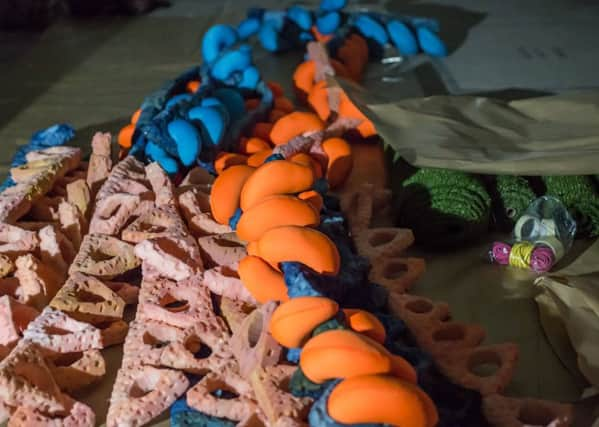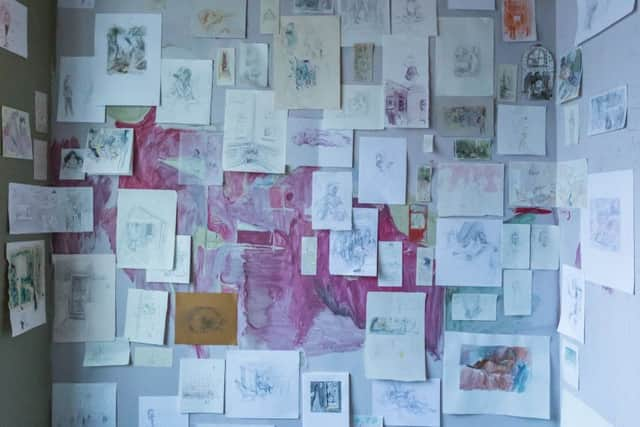Art review: Hidden Door Visual Art Programme, Leith Theatre and State Cinema


It’s a properly eclectic selection this year. There is no theme, and no particular attempt to invite the works to talk to one another. There is simply a succession of spaces, from the dressing rooms of Leith Theatre to the basement of the State Cinema, where each artist is free to do their own thing, and the audience seeks them out, like Alice down the rabbit hole: curiouser and curiouser it does indeed become.
These buildings have atmosphere in spades, and some of the artists choose to work with that. Tess Glen turns one of the dressing rooms at Leith Theatre into a lovers’ retreat: with their coffee cups on the table and their drawings pinned to the walls, one feels as if one has stumbled into a fragile, private world. Emma Rogers’ origami stars enchant a dank hallway space.
Advertisement
Hide AdIn the old projection room in the attic of Leith Theatre, Clara Rider has placed mobiles of coloured glass which play with light, rather as the cinema does. Nearby, Calum Scott has built an inventive “sound sculpture” involving a complex system of levers, buckets and dripping water.


In the theatre’s basement, Mark Doyle displays a fascinating body of ceramic sculptures, which look rather beautiful until one realises they are the shapes of smart bombs.
The small, individual spaces give artists the chance to create their own atmosphere. Marine Lefebvre boldly invites viewers to “please feel free to visit my mind”, which turns out to be a place of contradictions and marvels in yellow and blue, and includes trees with latex leaves. Jennie Bates uses a particularly subterranean space to mimic the sensation of being under water, somehow both claustrophobic and spacious at the same time.
Camila Cavalcante has painted her space a dazzling white for an installation documenting issues around abortion in Brazil (where it is largely illegal), while the photographic portraits of singers and storytellers of the North by Robyn Braham on the back stairs are a surprise and a delight.
In the dark, derelict foyer of the State Cinema, Lucy Wayman (you might remember her sculptures made of woven mop heads in her degree show at ECA in 2016) has created a delicate weave of golden threads looping over our heads, while Jill Martin Boualaxai’s mosaic of weathered metal half blends in to the peeling walls.
In the basement, there are bigger ambitions: Silas Parry’s Worms of Surplus, formed from 21st century consumer goods; Charlie Cook’s impressive wooden machine which produces a round of applause via 30 pairs of wooden hands; and Louis McHugh’s installation using an acreage of VHS video tape and some spooky projection.
Advertisement
Hide AdWatching redundant technology come to life in the basement of a derelict cinema is both somewhat unsettling and entirely appropriate, the kind of magic moment which Hidden Door is so good at producing.